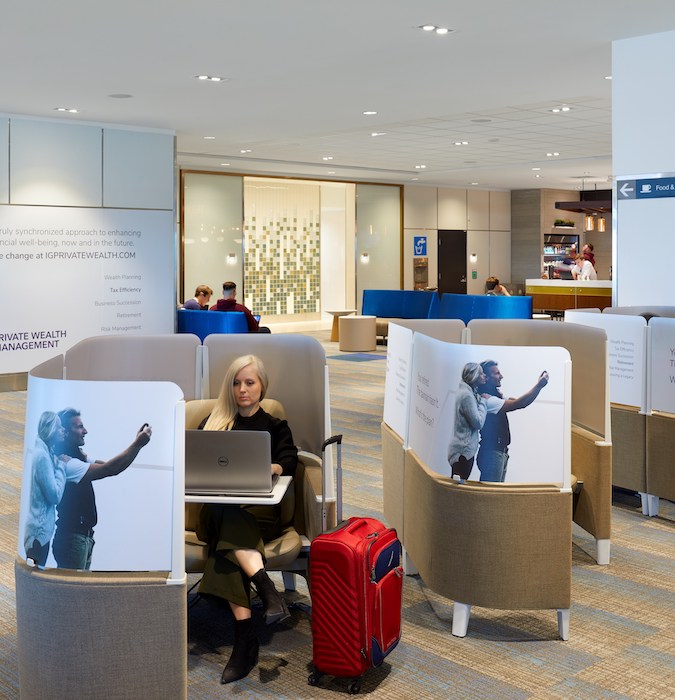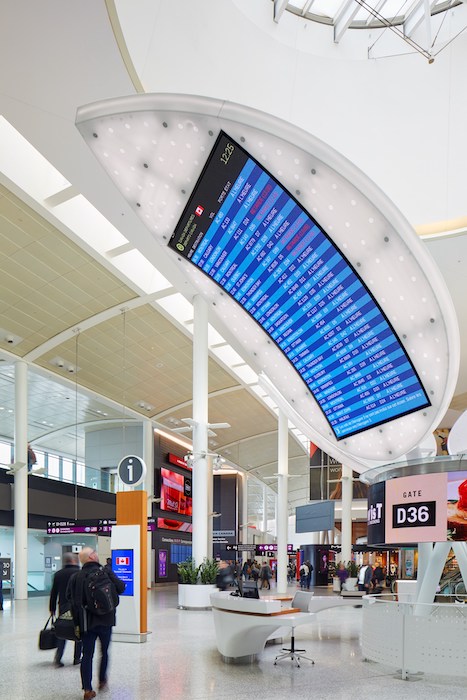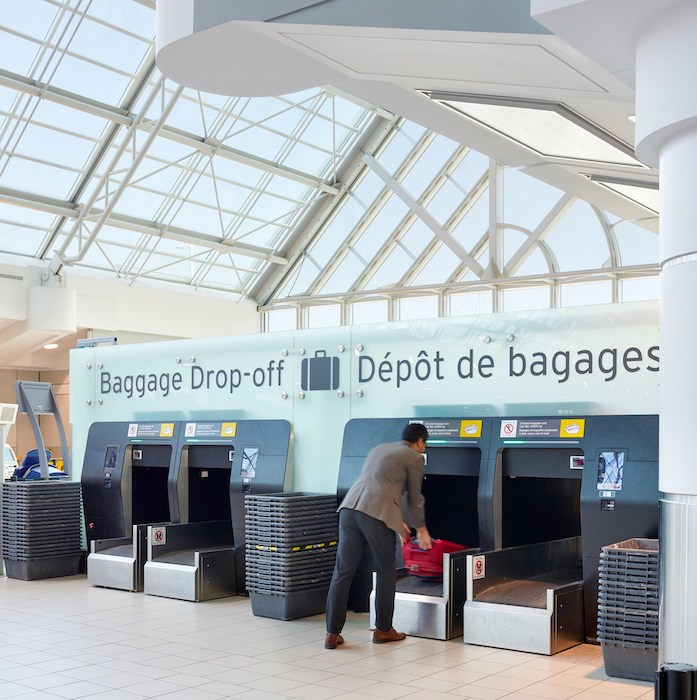
Post-COVID airports
December 6, 2021
By Alvaro Fernandez de Mesa
Can the aviation industry soar again?
The aviation industry certainly felt the hit of COVID-19, quickly turning the green numbers into red early on in the global pandemic. Daily passenger numbers dropped by 96%.
As travel is now making a comeback and there seems to be a light at the end of the tunnel, airports will need to embrace the new normal while also reassuring passengers they are safe environments … but how?
It’s important to start simple. With regard to health and wellness, COVID-19 has made it clear the keys include social distancing, personal hygiene and a heightened awareness of our personal impact on those around us.
As travel returns, then, how will airport terminals themselves respond and adapt to the new protocols? The following are a few possibilities.
Which way do I go?
More than ever, airport users will need to feel comfortable and safe while navigating through terminals. They want to have confidence in where they are going and to avoid simply wandering through airports.
Wayfinding signage with a clear view of what’s ahead and additional information—such as estimated walking times and updated departures—is a great way to help passengers feel more confident and to reduce their travel-related stress.

Even after mask mandates are eventually dropped, it will be important to maintain safe space between passengers, to mitigate transmission of airborne diseases.
Can’t touch this!
Touchless technology already existed before COVID-19. Post-pandemic, it will see greater use to enhance the passenger experience, with typical airport areas needing some rethinking as they move back into normal operations.
Beyond making key processes like check-in and boarding touchless, technology can also update how passengers order their food and buy duty-free items before hopping on a plane. In this way, they can enjoy a seamless and touchless experience from curbside to seat.
The technology already exists for a seamless and touchless experience.
No more ‘hurry up and wait’
Among the most frustrating parts of travelling are some of the biggest logistical problems to solve: wait times and crowding.
Technology could play a major role in reducing queues and preventing crowds from gathering at check-in and boarding zones. These changes likely start with faster document processing equipment, but will also need to add passenger notifications and other ways to reduce crowding.
Queues can be reduced substantially if the integration of new technology can increase processing capacity. Biometrics, for example, have already helped accelerate processing in various airport terminals. Indeed, new scanning equipment can be equivalent to doubling the number of staff at security screening points.
Knowing where passengers are and providing this real-time information to agencies and airlines can also help improve the efficiency of staffing of processing areas. So too can encouraging travellers to undertake simple functions like checking in and printing their boarding passes and baggage tags before they even arrive at the airport. Even self-service kiosks, a relatively older technology, have helped to ‘scatter’ passengers and reduce the burden on check-in agents and immigration staff.
Hygiene and infection control
In a post-pandemic world, travellers will need to embrace hygiene more than they typically did in the past. Open washing stations that are more visible and accessible will raise awareness of and reinforce safety practices.
There are also lessons to be learned from infection control strategies at health-care facilities, including the use of natural and durable materials for interior finishes, a more stringent cleaning regimen (e.g. adding UV light-based disinfection) and more dynamic indoor air quality (IAQ) and flow technology, among others.
Also like the health-care industry, personal protection equipment (PPE)—such as masks, face shields and gloves—should continue to become a normal part of our lives in airports.
Airports can benefit from the same infection control strategies implemented at health-care facilities.
Where do I sit?
Waiting areas at gates will also need some adjustments as airports move back into normal operations. Even before COVID-19, people would leave empty seats between each other until it was too crowded to do so.
To prevent these areas from becoming too crowded in the first place, amenities should be actively offered and promoted throughout airports, so as to encourage travellers to enjoy other parts of the terminal before boarding. Technology can also help assure them they can move freely until their plane is ready to leave.
Feeling warm?
Many of us can remember how security and baggage screening was boosted to unprecedented levels after the terrorist attacks of Sept. 11, 2001, forever affecting the way we travel. We can expect a similar focus on health in a post-COVID world, with the aviation industry potentially mandating health checks with vaccine passports, temperature monitoring and more.
The importance of the industry promoting health has been recognized by airport and airline consultancy Skytrax with the creation of its COVID-19 Airport Excellence Award. This honours airports selected by their customers for providing the top health, hygiene and safety protocols during the global pandemic. (In 2021, by way of example, Vancouver International Airport was among the award’s global winners.)
Travel well
As airports reinvent their offerings for travellers, wellness has become a popular method for reducing the stress of travelling with new experiences. Airport customers can ride stationary bikes to charge their phones, for example, or enjoy a massage. Some airports add nature with interior green spaces and light, while others bring in therapy dogs to interact with waiting passengers. COVID-19 has highlighted the importance of physical, mental and emotional well-being.
Rethinking the experience
While aviation was one of the hardest-hit industries during the global pandemic, there is an opportunity now to rethink how it can support a healthier travel experience for those passengers who now feel ready to get back up into the friendly skies.
Alvaro Fernandez de Mesa is an associate at Stantec who plans and designs airport terminals. He has been a key member on project teams for major expansions of international airports in Vancouver, New York, N.Y., and Santiago, Chile, bringing broad global experience to the transformation of each space from concept to reality. For more information, contact him at alvaro.fernandezdemesa@stantec.com.
This article originally appeared in the November/December 2021 issue of Canadian Consulting Engineer.


